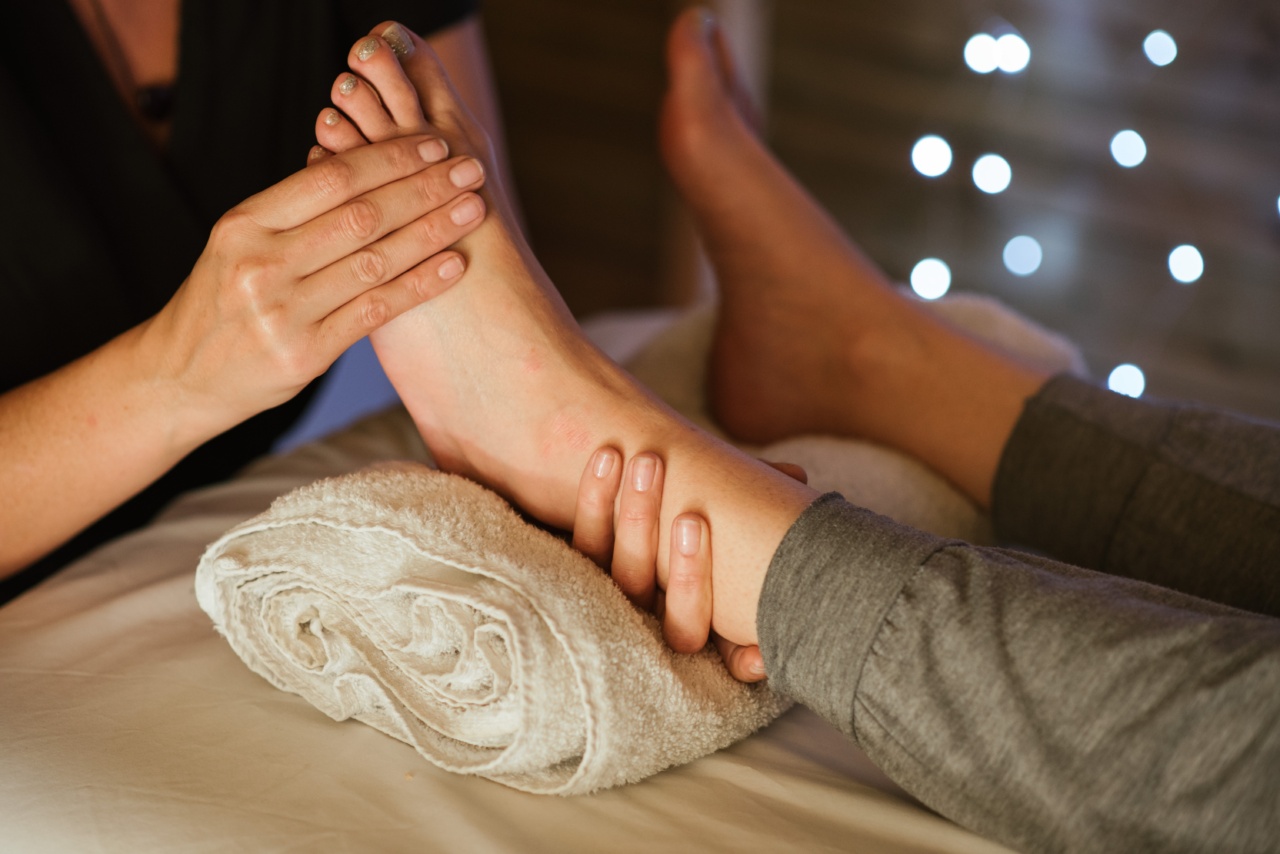Pregnancy is a beautiful journey that brings about numerous changes to a woman’s body. However, along with the joys of pregnancy, many women also experience uncomfortable symptoms, such as ankle swelling.
Ankle swelling during pregnancy is a common condition known as edema, which is characterized by the accumulation of fluid in the lower extremities. While ankle swelling can be bothersome, there are several measures that pregnant women can take to find relief. In this article, we will explore the causes of pregnancy-related ankle swelling and provide effective ways to alleviate this discomfort.
Causes of Pregnancy-Related Ankle Swelling
Pregnancy-related ankle swelling is primarily caused by the increased pressure on the blood vessels and lymphatic system, as well as hormonal changes. Here are some of the main reasons why pregnant women may experience ankle swelling:.
1. Hormonal Changes
During pregnancy, hormonal levels fluctuate significantly. One of the hormones that plays a role in ankle swelling is progesterone. Progesterone causes blood vessels to relax, leading to increased fluid retention and swelling in the ankles.
2. Increased Blood Volume
During pregnancy, a woman’s blood volume increases to support the growing fetus. This extra blood circulates throughout the body and can lead to fluid retention in the ankles.
3. Pressure on Blood Vessels
As the uterus expands to accommodate the growing baby, it puts pressure on the veins that return blood from the legs and feet to the heart. This pressure can slow down blood circulation, leading to fluid buildup and swelling in the ankles.
4. Gravity
Gravity plays a significant role in ankle swelling during pregnancy. The weight of the baby, combined with the uterus pressing on blood vessels, can make it harder for blood and fluid to be pumped back up from the legs, resulting in swelling.
5. Poor Circulation
Some women may naturally have poorer circulation, which can make them more prone to ankle swelling during pregnancy. Conditions such as varicose veins or blood clots can further exacerbate swelling.
Effective Ways to Relieve Pregnancy-Related Ankle Swelling
While pregnancy-related ankle swelling can be uncomfortable, there are several measures that can be taken to find relief. Here are some effective ways to alleviate this discomfort:.
1. Stay Active and Exercise Regularly
Engaging in regular physical activity is beneficial for overall health and can help improve circulation. Low-impact exercises, such as swimming or walking, can help reduce ankle swelling during pregnancy.
However, it is important to consult with a healthcare professional before starting any exercise program during pregnancy.
2. Elevate Your Legs
Propping your legs up on a pillow or cushion while sitting or lying down can help reduce swelling. Elevating the legs allows gravity to assist in draining the excess fluid from the ankles and can provide relief.
3. Wear Compression Stockings
Compression stockings are tight-fitting socks or stockings that can help improve circulation and prevent fluid from pooling in the ankles. They exert pressure on the legs, aiding in the movement of blood and reducing swelling.
It is advisable to consult with a healthcare professional to find the right size and type of compression stockings suitable for pregnancy.
4. Avoid Standing or Sitting for Prolonged Periods
Prolonged periods of standing or sitting can worsen ankle swelling during pregnancy. Aim to take regular breaks and change positions frequently to prevent fluid buildup.
If you have a job that requires long periods of standing, consider using a footstool to elevate one foot at a time or using a chair with proper back support.
5. Stay Hydrated
Drinking an adequate amount of water can help flush out toxins and reduce water retention in the body. While it may seem counterintuitive, staying hydrated can actually help alleviate ankle swelling.
6. Follow a Balanced Diet
Eating a well-balanced diet that is low in salt and high in nutrients can help manage ankle swelling during pregnancy. Excessive salt intake can contribute to fluid retention.
Including foods rich in potassium, such as bananas, can help regulate fluid balance in the body.
7. Practice Foot Exercises
Simple foot exercises, such as ankle circles or flexing and pointing your toes, can help improve circulation and reduce swelling in the ankles. These exercises can be done while sitting or lying down and provide relief.
8. Use Cold Compresses
Applying cold compresses to the swollen ankles can help reduce inflammation and provide temporary relief. Use a cold pack or wrap some ice in a cloth and gently apply it to the affected area for 10-15 minutes at a time.
9. Seek Support
It is always important to seek support from your healthcare provider regarding any concerns or discomfort experienced during pregnancy. They can provide personalized advice and recommend specific treatments or therapies tailored to your situation.
10. Clothing and Shoe Choices
Wearing loose-fitting clothing and comfortable shoes that provide proper support can help minimize ankle swelling. Avoid wearing tight socks or shoes with tight straps, as they can restrict blood flow and contribute to swelling.































